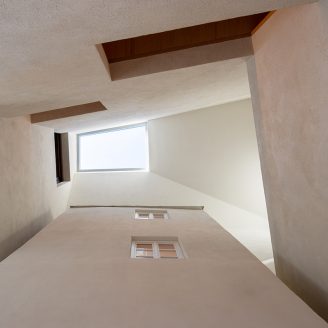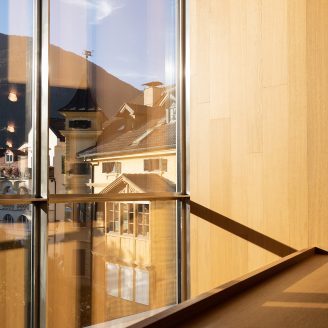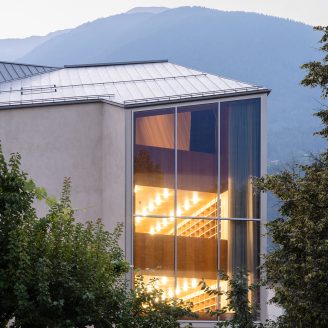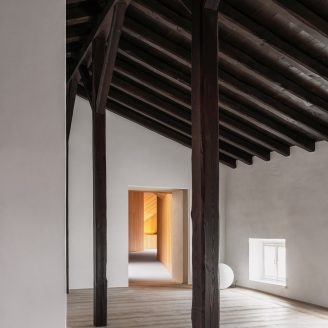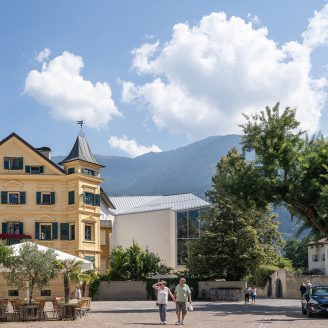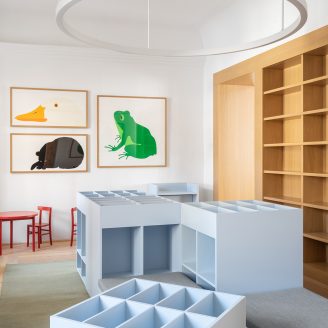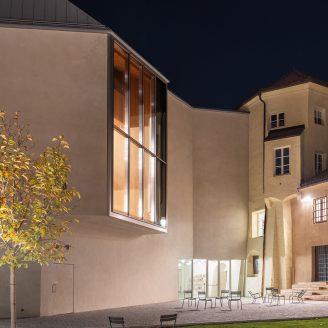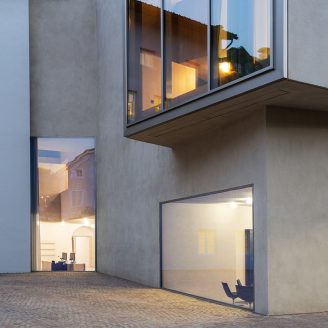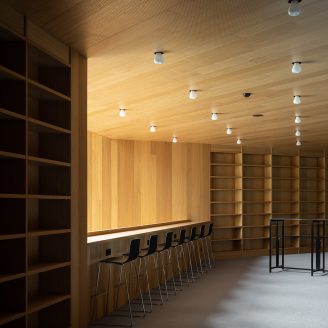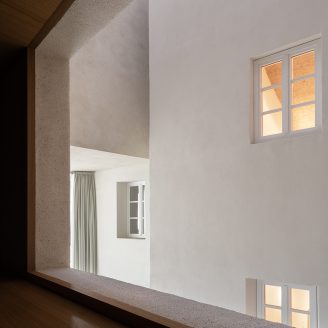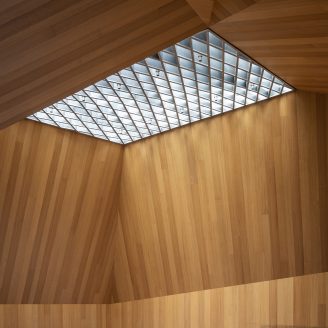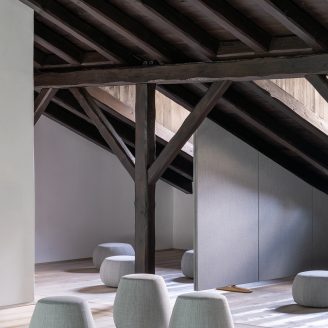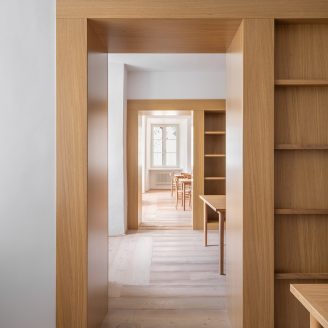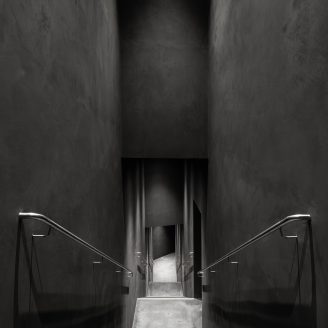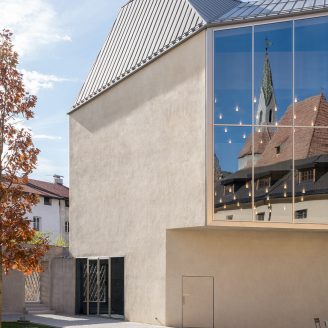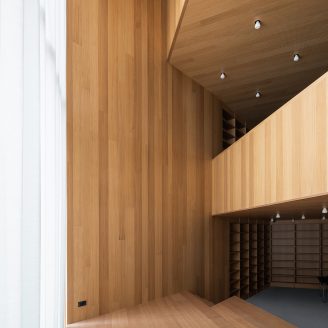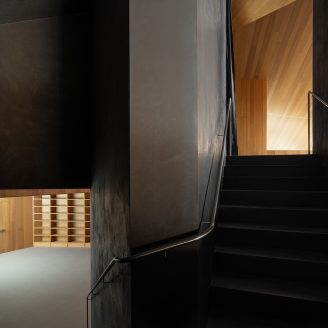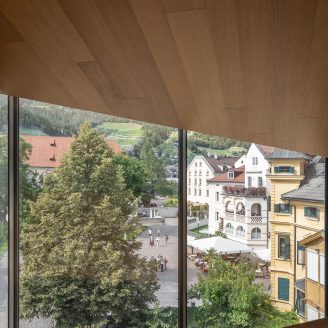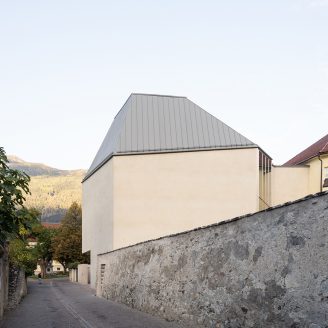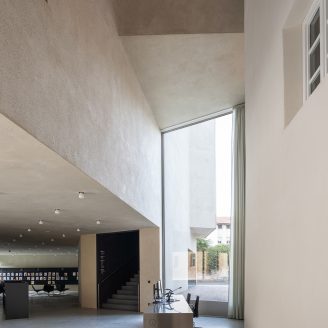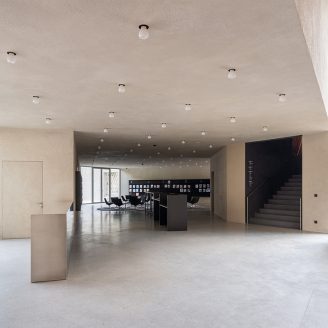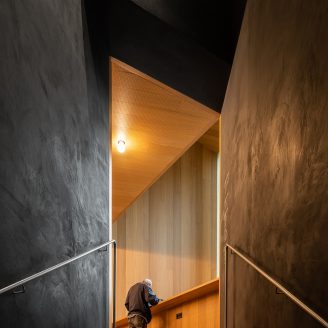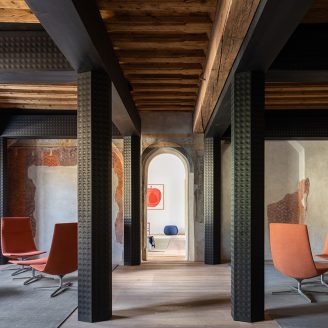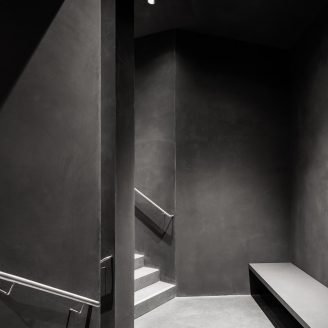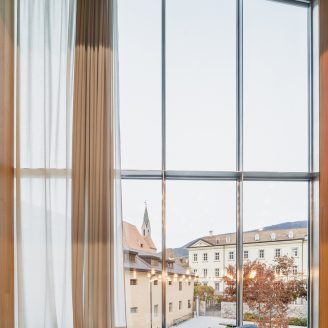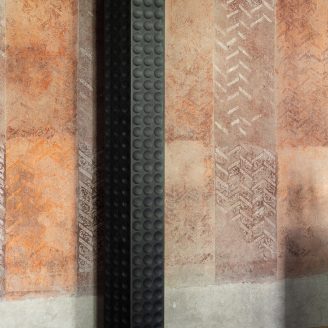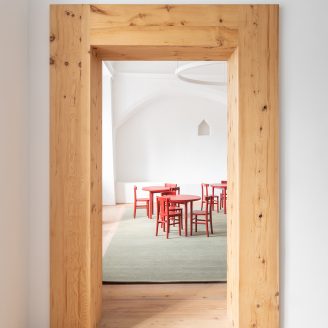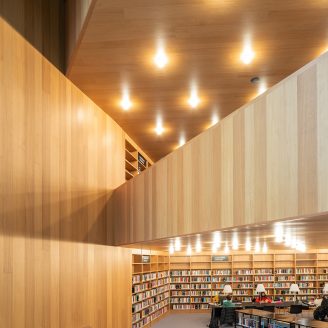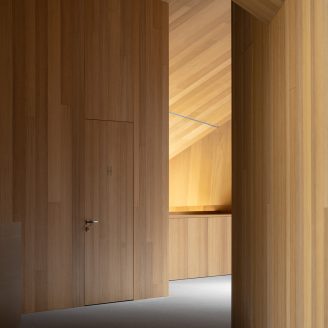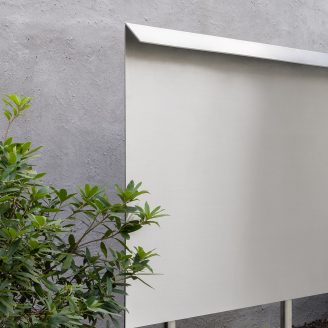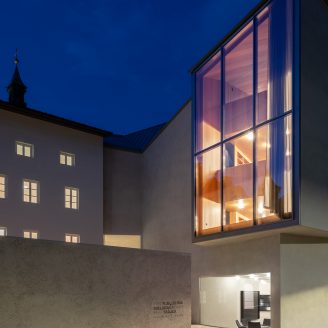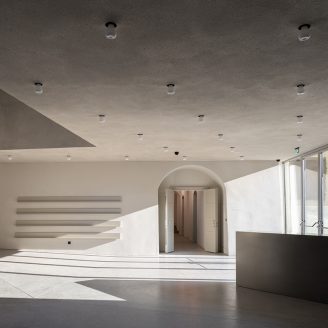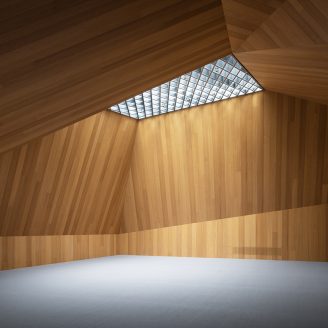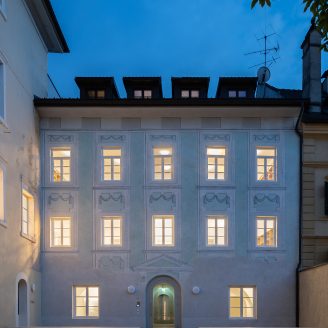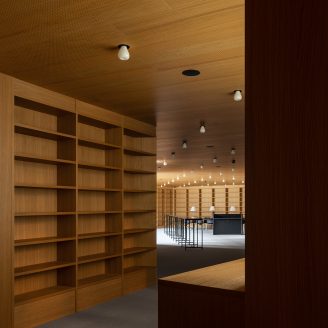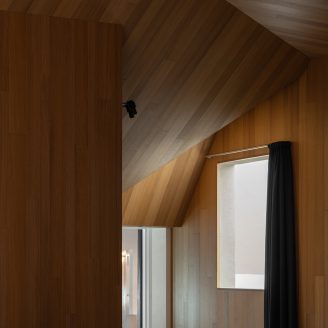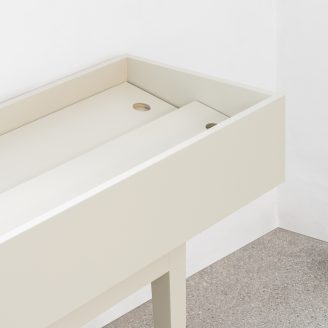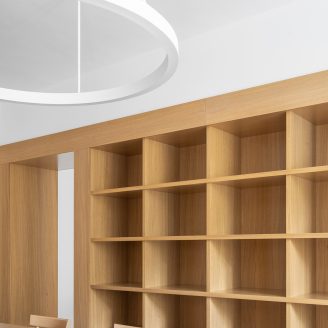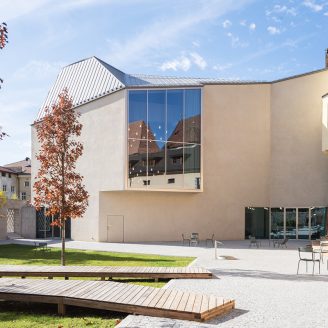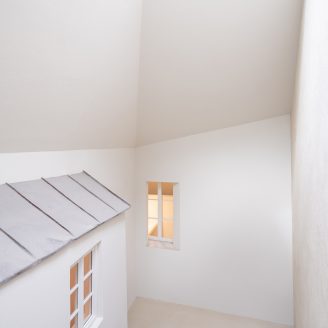In the heart of Brixen (Italy), a stone’s throw from the Duomo, architectural firm Carlana Mezzalira Pentimalli has completed the new Brixen Public Library, a public institution founded in 1984, which, with its legacy of over 36.000 books, represents a landmark for the entire Isarco Valley.
The architects wanted to give the community a contemporary space for learning and sharing, a welcoming urban living room that reinforces local cultural identity and instills a strong sense of social cohesion.
The project consists of the construction of a unitary complex which includes a new building and the restoration and annexation of the existing buildings of the Ex Finance, a portion of the Ex Court (the first two levels) and of the Ex Prison (part of the ground floor and first floor). The intervention is completed by the redefinition of the existing external spaces, two pedestrian access areas to the north and south of the Ex Finance building, and the garden adjacent to Via Bruno, which was once private and owned by the Bishop.
A real connecting infrastructure, the new building behaves structurally like a “tree” that leans its cement “branches” towards the buildings of the Ex Finance and the Ex Court, establishing a perpetual relationship between new and old, and inspiring the architects to rename the project, “Kulturbaum, tree of culture“.
In order to meet the need for great flexibility and adaptability of the spaces of a contemporary public library, far from adopting the classic shelving system, the building has a double perimeter shell located between the external concrete walls and the wooden paneling that covers the interiors, and which houses most of the serving spaces: from the vertical distribution to the toilets, to the furniture with bookcases, fixed benches, tables, and more. This “cortex” envelops the space, completely freeing it from any functional obligation.
The versatility of the environments has also guided the intended management and use of the library. By controlling some strategic access points, in fact, the complex can be completely or partially permeable to the different floors.
To resolve the minor differences in elevation between the three buildings, the new “branches” compensate for the changes in elevation through slight slopes. The new volume contains two vertical links with different characteristics. The closed fire escape, in addition to serving all floors of the courthouse as an emergency exit, also acts as a staircase that connects the ground floor with the attic of the new building. The open staircase facilitates quick connections between the floors, inviting those who walk through it to enjoy glimpses of the new spatiality. Compositionally and functionally, both staircases are incorporated into the “cortex”, while the pre-existing Ex Finance staricase is mainly intended for service use.
Total continuity is guaranteed between the exteriors, enhanced by the insertion of tailored furnishing elements, and the interiors of the new library, intended to perform as a true public space.
Access to the new building is from the ground floor through the infotheque. From here, a generous quadruple height space, occupied by the reception area, grants access to the lifts. To the south, there is a newspaper library that can be made independent, ensuring excellent flexibility. On the first floor, the fiction area is designed as an open space which provides access — through a second reception area — to the activities located in the Ex Court and Ex Finance or to the upper floors via a staircase and lift. The second floor is mainly occupied by the non-fiction / treatise area, which directly connects to the Ex Finance building, extending this function. On the third floor, an additional reception area acts as a junction between the multipurpose room and the literary events area. Toilets, cleaning rooms, storage areas and information desks are evenly distributed on the various levels.
The renovation of the other existing buildings has enhanced their ancient character and their high degree of flexibility to accommodate different activities open to the public.
The Ex Finance building is configured as an access point to the new intervention with the main front facing Piazza Duomo. On the ground floor, in addition to the two access points to the north (main) and south (secondary), there is an infotheque, a borrow and return area, and cloakroom spaces. The first floor houses the internal offices of the library, while the second and third floors host spaces for non-fiction and treatises and a multipurpose room. Accessibility is granted through a designated independent stairwell and lift.
The ground floor of the Ex Court building mainly houses service areas: automated warehouses, the area for checking the 24 h borrow and return area, an external counter, toilets and technical rooms. The first floor ecompasses the children’s area, the kids’ area, music department with archive, playroom and a multipurpose room. The entrance is located on the first floor from the south of the building, the children’s area is situated on the east side of the corridor, while the playroom is on the west. Continuing along the corridor, before the frescoes room, the multipurpose room is located to the east and the music archive to the west. To the north, the children’s area is housed in a more secluded setting, with two independent rooms and a large area that can also be divided with furniture containing books and games.
In the Ex-Prison building, a passage gallery and an adjacent ancillary room have been built.
Special attention has been paid to natural lighting; the south wall of the building, devoid of interesting views, is deliberately blind to prevent the entry of direct light and equipped on the inside with a “bookcase wall” that occupies the entire height of the building.
The main components of the context have been reinterpreted in a contemporary key, such as the characteristic “erker”– typical bow windows that characterize the historic center. Two of these, of a giant order, favor strategic views on the city’s landmarks. Formally, the two erkers on the outside represent the extension of the volume of the building, within which they recreate a spatiality typical of Nordic culture. The large windows, which trace the boundary between inside and outside, have been designed to favor indirect light at the points where there is the greatest flux and concentration of people.
Finally, two large skylights placed at the top of the complex pitched roof allow the sun’s rays to cross the entire height of the building and reach the ground floor, thanks to an articulated system of retraction of the different floors, which plays a fundamental role in the introspection system between them.
Each internal glimpse, in which everything has been custom designed, is different, due to the great geometric and volumetric complexity of the building, camouflaged on the outside with clean and essential lines that blend perfectly with the pre-existing structures.
Deeply rooted in the context, the project of the new Brixen Public Library project by Carlana Mezzalira Pentimalli is an innovative public venue capable of interweaving historical and contemporary fabric.


